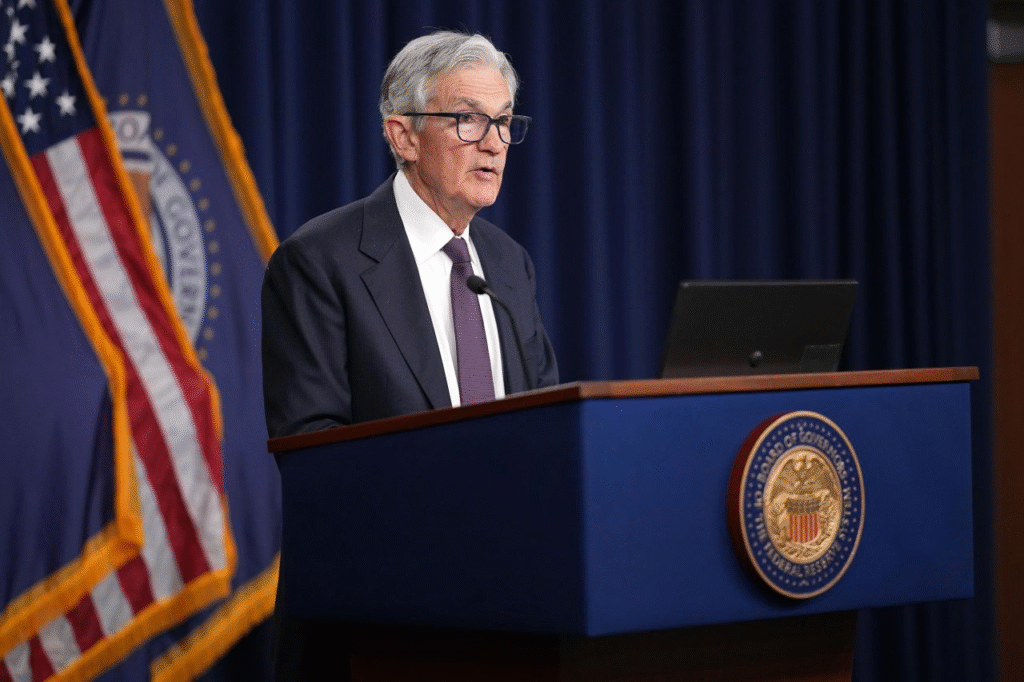Trump Announces US-UK Trade Deal
President Donald Trump announced a new trade deal with the United Kingdom on May 8, 2025, calling it a “full and comprehensive” agreement to strengthen ties between the two nations.

Andrew Harnik/Getty Images
The deal, unveiled at 10 a.m. ET, aims to reduce tariffs on specific goods and comes as Trump’s global tariff policies continue to stir economic uncertainty.
While hailed as a diplomatic win, experts warn the agreement is narrower than suggested and may not fully shield either country from broader trade challenges.
Background: Tariff Wars and Trade Talks
Since taking office in January 2025, Trump has imposed steep tariffs on dozens of countries, including a 10% levy on all UK exports and 25% tariffs on steel, aluminum, and cars.
These measures, part of his “Liberation Day” tariff program, aim to boost US manufacturing but have disrupted global trade, raised consumer prices, and sparked fears of recession.
The UK, a key US ally, faced significant export losses, with companies like Jaguar Land Rover halting shipments to the US. British officials, led by Prime Minister Sir Keir Starmer, negotiated intensively to secure exemptions, prioritizing industries hit hardest by tariffs.
The deal follows months of talks and a recent UK-India trade agreement, signaling Britain’s push to diversify trade amid Trump’s policies.
US Benefits Revenue and Strategic Wins
The US stands to gain both economically and politically from the deal. Trump claims it will generate $6 billion in revenue from remaining 10% tariffs and create $5 billion in new export opportunities.

The agreement establishes an aluminum and steel trading zone, reducing costs for US manufacturers reliant on UK metals. It also secures the pharmaceutical supply chain, benefiting US consumers and firms. Politically, the deal bolsters Trump’s narrative that tariffs force allies to negotiate favorable terms, reinforcing his “America First” agenda.
Additionally, the UK’s decision to cut its digital services tax on US tech firms like Amazon and Google saves these companies millions, aligning with Trump’s push to protect American corporate interests. However, the deal’s limited scope means it may not fully offset the economic drag of broader tariffs on other nations.
UK’s Challenges Limited Relief, Ongoing Risks
For the UK, the deal offers partial relief but falls short of a game-changer. It lowers US tariffs on £10 billion in UK car exports and £3 billion in steel and aluminum, easing pressure on industries battered by Trump’s levies.
This could save jobs in manufacturing hubs like the Midlands, where firms feared layoffs. However, the UK remains subject to the 10% baseline tariff on most goods, and threatened 25% tariffs on pharmaceuticals still loom, endangering giants like GlaxoSmithKline and AstraZeneca. Experts, including King’s College London professor Jonathan Portes, call the deal “damage limitation” rather than a boost, as it does not address the wider impact of US tariffs on global trade.
The UK’s open economy is vulnerable to disruptions in Europe and Asia, where Trump’s policies have slowed demand for British goods.
Economic Impact with Uncertainty Persists
The US-UK deal reduces some trade friction but does little to calm global economic jitters. The Bank of England, which cut interest rates to 4.25% on May 8, welcomed the agreement for reducing uncertainty but warned that UK growth remains at risk from tariff-driven global slowdowns.
In the US, first-quarter GDP contracted, partly due to Trump’s erratic tariff policies, and consumer confidence has plummeted amid fears of higher prices. While the deal may stabilize bilateral trade, it does not address escalating US-China trade tensions, which threaten supply chains worldwide.
Economists warn that without broader tariff de-escalation, both nations face higher costs, reduced exports, and potential job losses.


 How Hakeem Jeffries Spoke 8 Hours to Challenge Trump’s Agenda
How Hakeem Jeffries Spoke 8 Hours to Challenge Trump’s Agenda  Why Trump’s Megabill Is Dividing House Republicans ?
Why Trump’s Megabill Is Dividing House Republicans ?  The Smell of Scandal: Trump’s Perfume Controversy
The Smell of Scandal: Trump’s Perfume Controversy  DRC President May Nominate Trump for Nobel Peace Prize
DRC President May Nominate Trump for Nobel Peace Prize  Why Is Trump Doubling Down on a US-India Trade Agreement?
Why Is Trump Doubling Down on a US-India Trade Agreement?  Why Zohran Mamdani Faces Accusations of Anti-India Sentiment
Why Zohran Mamdani Faces Accusations of Anti-India Sentiment